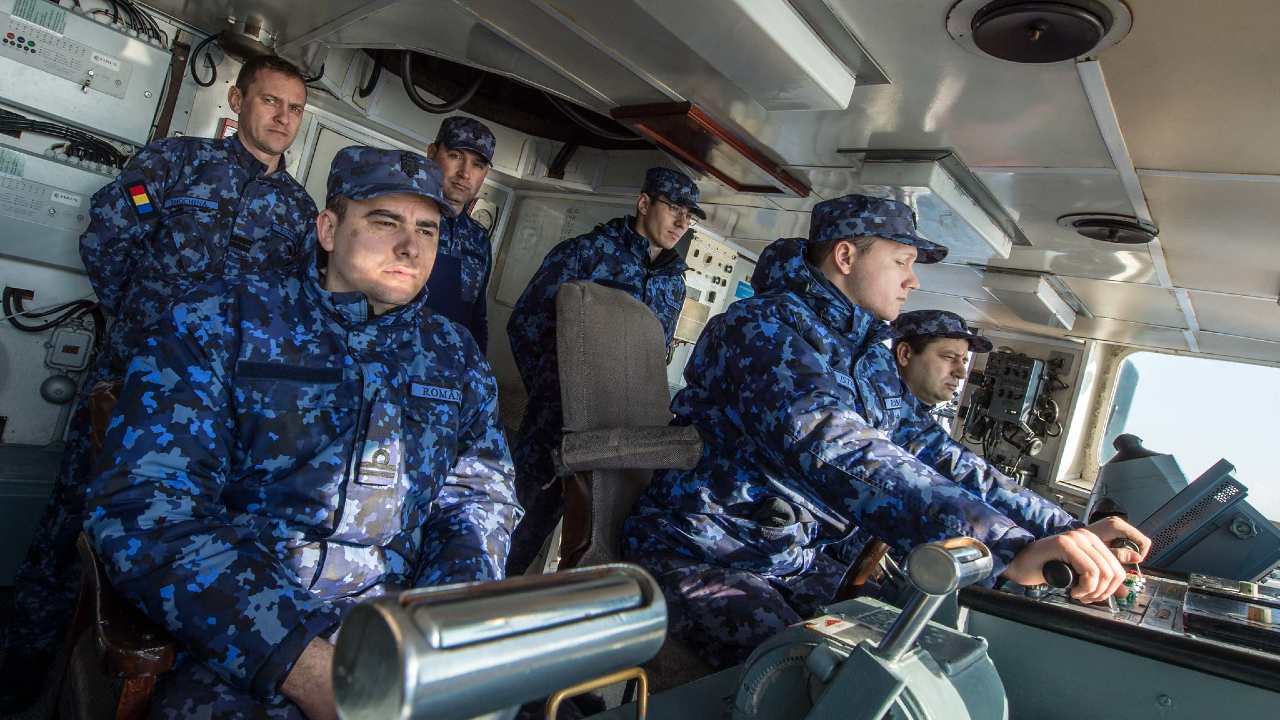In a world where power and influence are finite quantities that ebb and flow with the rise and fall of great empires, we are constantly faced with difficult decisions on how to allocate resources to maintain peace and security. Unlike the 20th Century where deterrence was black or white — you were in either one block or the other (NATO vs. the Warsaw Pact) and both sides had nuclear weapons making the thought of a kinetic war on the continent of Europe both unsavory and potentially escalatory.
In the final analysis, deterrence worked for 45 years until the ultimate fall of the Berlin Wall and disaggregation of the Soviet Union in 1989. Sadly, not much has changed, in terms of Russian behavior or my thinking on the measures we must take to keep them in check. It’s all about risk and we have no choice but to increase the risk calculus for President Putin and General Gerasimov, his armed forces commandeer, and make it intuitively obvious that a violation of the sovereign territory of a NATO ally will be met with a swift and overwhelming response.
The Black Sea region is key, as current events are proving. Russia has deployed enormous forces close to Ukraine’s border and plans live-fire exercises with vessels including large tank landing ships on the Black Sea shortly. U.S. ships are regularly sent to the area and likely will be again soon (the British are sending two warships next month.)
Yet the region is in flux. Currently, there exists a dichotomy between those nations who have achieved Euro-Atlantic integration (like Romania) and those who aspire to achieve it (like Georgia.) Impediments to progress, based on cultural, traditional, historical, or political norms have exacerbated the ability to reach an enduring peace and security in this important economic region.

My thoughts on the threat in this critical area in 1990 mirror my thoughts on the threat today. Here’s what I wrote back then:
Doubts about Naval Confidence-building Measures: [There are] two previous international accords involving information exchange and naval confidence-building measures . . . [these] are the multilateral Montreux Convention of 1936, still in force, and the Incidents at Sea Agreement, signed by the United States and Soviet Union in 1972.
These treaties are not exactly models. The Soviets have been able to find holes in the Montreux Convention. Soviet Admiral Mikhail N. Khronopulo, Commander of the Soviet Black Sea Fleet, was asked if the construction of the new aircraft carrier Tbilisi would pose any problem to Soviet compliance with the Montreux Convention, which restricts aircraft carriers from entering the Straits of the Dardanelles in the Black Sea. He replied that there would be no problem whatsoever, since the Tbilisi was not an aircraft carrier, but a large cruiser instead. And while it is true that the Incidents at Sea Agreement — intended to prevent the collision or the inadvertent outbreak of hostilities between U.S. and Soviet warships — has reduced the number of “reported” incidents at sea between the United States and the Soviet Union, the record of Soviet compliance is not ideal . . . [and] did not prevent the Soviets from creating an international incident in the Black Sea on 13 February 1988, when the USS Yorktown (CG-48) was rammed by a Soviet frigate. No international agreement could have prevented this. Regardless of the fact that the U.S. vessels were perfectly within their rights to sail in these waters, the Soviets attempted to exploit this incident as an act of U.S. aggression and a threat to Soviet sovereignty.
Since that time, the Russians have continued to challenge Western naval operations in the Black Sea region. It is my view that we must continue to maintain a strong presence there and to push back. It was for this reason that we deployed our first Burke Class DDG (guided-missile destroyers) in the Black Sea during my time as Operations Officer of the Sixth Fleet in 2012. The Russians démarched us. They feared the magazine of these warships which carry a combination of Tomahawk land-attack missiles and standard missile interceptors, including the SM-3, the most effective upper-tier anti-ballistic missile countermeasure in Western navy inventories. Our response next time: send two destroyers and not just one. Eventually, they stopped protesting. They became acclimated to our presence there. Earlier this month, we operated three ships in the Black Sea with two DDGs and one Auxiliary — this must continue.
Russia illegally annexed Crimea in 2014—another unexpected, strategic surprise for NATO, although it should not have been. Warning signs were there. Meanwhile, the Russians have deployed six new-generation hybrid KILO-class submarines to the region. Like I said, they read my play-book, and put Kalibr-class cruise missiles on this platform, which can reach any capital in Europe from the Black Sea, Mediterranean Sea, White Sea, Arctic Sea, or Greenland-Iceland-UK gap. This is a concern.
![IMG_0450[2]](https://cepa.org/wp-content/uploads/2021/04/IMG_04502.jpg)
The Russians repeatedly violate the Montreux Convention by moving these Kilos in and out of the Black Sea, uncontested by the Turks, and under the guise of “maintenance.” This should continue to be protested.
Russia continues to pressurize the Black Sea. The 2018 Sea of Azov incident — where Russian vessels fired on and captured Ukrainian naval vessels — causes me to pause. My biggest concern is that leaving such an egregious violation of standards of behavior on the high seas by Russian FSB forces unchallenged or unchecked could mean that they (the Russians) will export this model of bullying to the rest of the Black Sea. I believe that the Turks share my concerns, as do the Romanians.
Accordingly, during my command tour in Naples, Italy, as we worked to update plans for the Black Sea Region and the Graduated Response Plan (GRP) for the Black Sea, I chose to take all of my generals and admirals to the region to conduct a “Terrain Walk” of the battlespace. This is a very Army-centric thing to do. The United States Army and Lt-Gen Ben Hodges did these all the time and called them staff rides.
There was only one other time that I had received so much cooperation from a close Ally in collective defense and that was from Norway during Exercise Trident Juncture. When Norwegians mobilize under Article 5, they execute the Total Defense Concept, whereby every Norwegian harkens back to his or her training during conscription and comes forward to help the nation and NATO in defense. Everyone, from taxi drivers, farmers, stevedores, and air traffic controllers surrender their time and their lines of communication (roads, waterways, and air corridors) to NATO for the defense of the nation.
After our Terrain Walk in Romania, I concluded that the Romanian people have the same philosophy. General Ciucă became Defense Minister while we were there and he ordered every General to the field to support us. General Petrescu, General Berdilă, and many others were there. We overflew the entire country and examined ports, roads, and waterways like the Danube to determine how they would figure in our modernized plans. Accordingly, I concluded that staff rides do not have to be isolated to one domain. They involve all domains, so I chose to end our terrain walk in the port of Constanta, in the heart of the Romanian Navy and its Black Sea Fleet. There I teamed up with my friend of many years, VADM Alexander Mirsu. The “Photo Op” that day was in front of the Romanian Navy ships framed by the backdrop of the Black Sea. All of my Generals and Admirals were photographed against their Romanian Counterparts and the message to our adversary was clear: Do not test us.
My final stop was onboard the Romanian tall ship Mircea, sister ship to our Coast Guard Academy bark, Eagle with Admiral Mirsu. It was the opportunity we had to spend time together before we both retired.
It is for all these reasons that during my change of command speech in Naples, Italy on 17 July last year, I mentioned the Black Sea Region three times. Generals Ciucă and Petrescu were in the audience in attendance. General Ciucă thanked me personally afterward for keeping the Black Sea region at the forefront of NATO’s priorities. Sharing a seat with me on the dais that day were Supreme Allied Commander Europe, General Tod Wolters, the Chairman of the Military Committee, Air Chief Marshall Stu Peach, and the U.S. Secretary of the Navy, Kenneth Braithwaite. My comments were not lost on them either.
The Black Sea remains an important region for stability, security, and economic prosperity in Eastern Europe. Maintaining peace and security in the region requires constant vigilance and presence. During these tumultuous times whereby the margins between peace and war are razor-thin, we cannot let our guard down.




